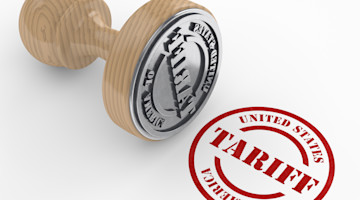The European automotive, aerospace, defense, and renewable energy industries have been researched and discussed in this column regularly as the main opportunities for manufacturing technology. Less discussed, but equally attractive to you sales folks, is the medical device industry. This week we will focus exclusively on that rapidly growing sector.
The estimate for the European medical market in 2020 was $150 billion. It is expected to grow annually by 10%-20% as investors see health care in a new light in the post-COVID era. Recent years have also witnessed the development of new and breakthrough technologies in the medical sector, beginning with MRNA. In the medical tech sector, new milestone applications have emerged with the use of virtual reality, innovative neurotechnology, artificial intelligence, robotics, and 3D printing. Fast developments have been noted in non-invasive technologies and health-related wearables.
Europe accounts for over 37% of the global market for medical devices, right after the United States at 40%. The largest markets are the U.K., Germany, France, Italy, Spain, Scandinavia, the northern countries of Central Europe, and Turkey.
The medical device manufacturers are concentrated in several countries of the European Union, as well as in the U.K. and Switzerland. In terms of ranking, the very top manufacturing country is Germany, followed by the U.K., Italy, Switzerland, Spain, and France. The data shows that Europe (Western and Central) has over 33,000 medical tech companies. It is growing with a high number of startups. In 2021 alone, newcomers in the sector accounted for nearly 4,500 companies. Although there are some industrial giants, 95% of the companies in the sector are small and medium-sized companies. Still, they are vital contributors to the economy and to exports from these countries. European medical device manufacturers employ some 760,000 people and are organized through their trade association, MedTech Europe, in Brussels.
The following are recognized as the top European manufacturers: Novartis (Switzerland), Koninklijke Philips (Netherlands), Fresenius (Germany), Siemens Healthhineers (Germany), B. Braun Melsungen (Germany), Smith & Nephew (U.K.), Draegerwerk (Germany), Coloplast (Denmark), Getinge (Sweden), and Paul Hartmann (Germany). Many U.S. multinational companies operate in Europe. For example, large conglomerate Medtronic has its headquarters in Dublin, Ireland, and its operational headquarters in Findlay, Minnesota.
The investment in medical tech has truly accelerated since 2020. Most of the new investment projects, including foreign direct investments, have recently been located in Western Europe – some 45% of the global tally. Moreover, some of medical tech investment money has also gone to Central and Eastern Europe. One of the primary drivers is the large consumer base with high disposable income levels and the capacity to purchase medical products – helped by the fact that many of these countries have government-backed programs to pay for new products and drugs (such as the U.K.’s NHS) or subsidize costs to consumers.
Germany has been ranked at the top for global destinations of medical tech FDI in recent years, accounting for some 20% of it, with main investors coming from the United States, Switzerland, Japan, and China. France, the U.K., Ireland, and the Netherlands are next, cumulatively attracting the same number of projects as Germany. Apart from Germany, U.S. investors have backed a significant number of projects in France, Ireland, the U.K., and Benelux.
While vast amounts of money have recently gone to pandemic research and development work, the largest investments in terms of medical tech equipment are dedicated to medical and dental instruments and supplies. This is followed by irradiation, electromedical and electrotherapeutic equipment, and ultrasonic equipment like scanners and imaging.









